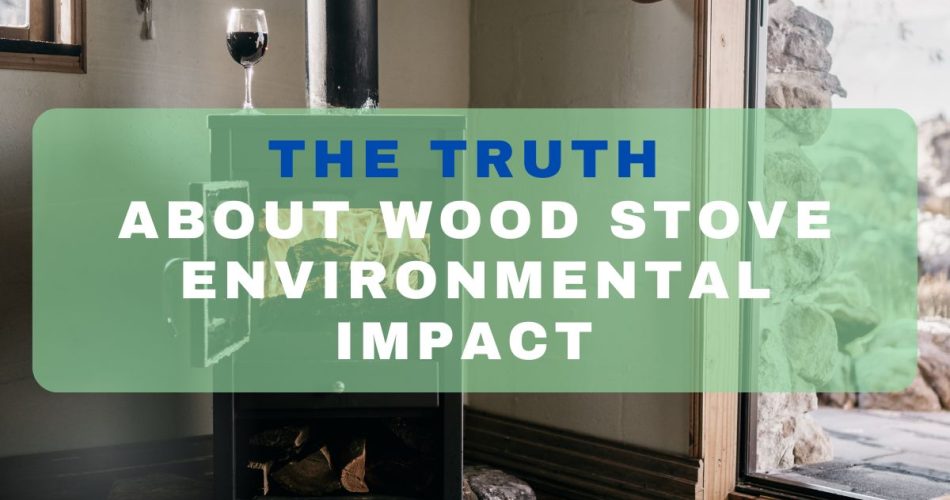In recent years, the conversation around wood stoves and their environmental impact has grown increasingly polarized. Critics often point to concerns about air pollution and deforestation, painting wood stoves as unsustainable relics of the past. However, my deep dive into the subject has revealed a more nuanced picture, where modern innovations and sustainable practices make wood stoves a viable, eco-friendly option for many.
The Air Pollution Argument
One of the most common criticisms against wood stoves is their contribution to air pollution, particularly in particulate matter (PM) emissions. Having experienced the warmth and comfort of a wood stove firsthand, I was curious about this claim and decided to investigate further. What I found was enlightening: not all wood stoves are created equal.
Advanced combustion technologies in new wood stoves can reduce smoke and ash production to astonishingly low levels, with some models producing less than 2 grams of particulate matter per hour, which is less than the emissions from a single diesel truck passing by.
Modern wood stove designs have come a long way regarding efficiency and emissions. The Environmental Protection Agency (EPA) has set stringent standards for wood stoves, and models certified by the EPA emit far fewer pollutants than their older counterparts. For instance, EPA-certified stoves must produce no more than 2 to 4.5 grams of PM per hour, significantly reducing from the 15-30 grams per hour emitted by older, non-certified models.
The Efficiency Factor
Efficiency is another area where modern wood stoves shine. Traditional stoves converted only a fraction of wood’s potential energy into heat, losing much of it up the chimney. In contrast, I’ve found that EPA-certified stoves boast efficiencies of over 70%, meaning more heat is delivered into the room with less wood burned. This reduces emissions and reduces fuel consumption, making wood stoves a more sustainable option.
Sustainable Wood Sourcing
The issue of deforestation is another critical aspect of the wood stove debate. It’s a valid concern: unsustainable logging practices can lead to losing vital forest ecosystems. However, the story doesn’t end there. Sustainable wood sourcing practices are gaining traction, ensuring that wood used for fuel comes from responsibly managed forests.
Wood is considered a carbon-neutral fuel when sourced sustainably, as the carbon dioxide released during combustion is approximately equal to the amount absorbed by the trees during their growth cycle, contributing to a balanced carbon cycle.
In my exploration, I discovered that many wood stove users turn to locally sourced wood, often from tree trimmings or sustainable forestry operations. This not only minimizes the carbon footprint associated with transporting the timber but also supports local economies. Moreover, when wood is sourced from forests managed with an eye toward sustainability, it can be a renewable resource. Trees absorb carbon dioxide as they grow, offsetting the emissions released when wood is burned.
The Carbon Neutrality Debate
Carbon neutrality is central to the argument in favor of wood stoves. When sourced responsibly, wood is considered a carbon-neutral fuel because the carbon dioxide released during combustion is roughly equal to the amount absorbed by the trees during their growth. This cycle of absorption and release creates a balance, making wood-burning a more sustainable option than fossil fuels, which release carbon locked away for millions of years.
EPA-certified wood stoves are up to 50% more energy-efficient than their older counterparts, and they emit 70% fewer particulate emissions, making them significantly more environmentally friendly and cost-effective over time.
The Bad Side of Wood Stoves
While wood stoves offer a sense of warmth and nostalgia, they have environmental drawbacks that cannot be overlooked. The charm of a crackling fire often masks the less visible consequences of their operation, particularly when it comes to older or non-certified models. Here, we delve into the darker aspects of wood stove usage and its impact on our planet.
Air Quality Degradation
One of the most immediate and concerning impacts of wood stoves is their contribution to air quality degradation. Inefficient combustion in older wood stoves releases significant amounts of fine particulate matter (PM2.5) into the atmosphere. These tiny particles can penetrate the lungs, exacerbating respiratory conditions, triggering heart problems, and aggravating asthma. The visual of a serene, snowy evening, with smoke curling up from chimneys, belies the invisible hazard lingering in the air, affecting the health of communities, especially in densely populated areas or valleys where air stagnation is common.
Carbon Monoxide Emissions
The dangers of wood stoves extend beyond outdoor air pollution to the air we breathe indoors. Older and improperly maintained stoves can emit dangerously high levels of carbon monoxide (CO), an odorless, colorless gas that can be lethal in enclosed spaces. This risk underscores the critical importance of regular maintenance and adequate ventilation when using wood stoves, highlighting a hidden danger in the pursuit of warmth.
Climate Change Contributions
The environmental impact of wood stoves is not confined to immediate surroundings; it has broader implications for global climate change. Unsustainable harvesting of wood for fuel leads to deforestation, diminishing the Earth’s capacity to absorb carbon dioxide. The cycle of burning wood releases this stored carbon back into the atmosphere, contributing to the greenhouse effect. This sad reality points to a more significant issue: the delicate balance between enjoying natural resources and maintaining the health of our planet’s ecosystems.
Release of Harmful Chemicals
Beyond particulate matter and carbon monoxide, wood stoves are also sources of various harmful chemicals, including volatile organic compounds (VOCs), nitrogen oxides (NOx), and even benzene. These emissions contribute to environmental pollution, forming ground-level ozone and smog, and pose significant health risks to both humans and wildlife. The complexity of these emissions adds layers to the environmental impact of wood stoves, making it clear that the issue extends far beyond simple smoke.
In confronting the bad side of wood stove usage, it becomes evident that the path forward involves more than individual action. It requires a collective shift towards more sustainable practices, the adoption of modern, cleaner-burning stove technologies, and a deeper understanding of the intricate relationship between our comforts and their environmental costs.
Conclusion
My journey into the world of wood stoves has been eye-opening. While it’s undeniable that wood burning, when done irresponsibly, can have negative environmental impacts, the advancements in stove technology and the move towards sustainable wood sourcing paint a different picture. Modern, EPA-certified wood stoves and responsible wood harvesting practices offer a more environmentally friendly heating option than many realize.
It’s crucial, however, to continue pushing for improvements and to adhere to best practices when using wood stoves. By choosing certified stoves, sourcing wood sustainably, and staying informed about the latest advancements, we can enjoy the warmth and ambiance of a wood fire without compromising our planet’s health.
Sources and Further Reading
- Everything You Need To Know About EPA Regulations
- Forest Stewardship Council (FSC): Guidelines and certifications for sustainable forestry practices.
- Energy.gov: Efficiency and emissions data for various heating systems, including wood stoves.
These resources have been invaluable in my research, offering good information on the environmental aspects of wood burning and the strides made toward more sustainable practices.
A single modern wood stove can heat up to 3,000 square feet of living space, showcasing the incredible efficiency and power of contemporary designs, which can effectively replace central heating in some homes.



Comments